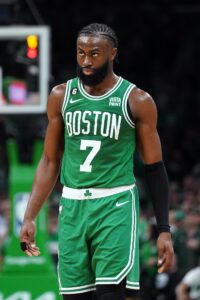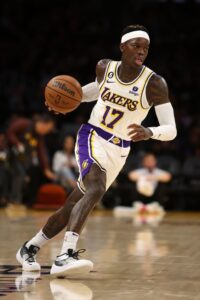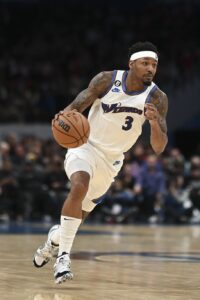The rules governing the number of players an NBA team can carry on its roster vary depending on the time of year.
Between the start of the regular season and the last day of a team’s season, a club isn’t allowed to carry more than 15 players on its roster, except in rare instances. Generally, when a club with 15 players on its roster acquires a new player, it must waive someone to clear a spot. In the offseason though, teams are permitted to carry up to 21 players on their rosters.
The regular season limit applies to players on standard contracts, while the offseason limit applies to players on any form of contract.
During both the regular season and offseason, a team is permitted to carry up to three players on two-way contracts, which are a non-standard form of deal that allows a player to be transferred back and forth between the NBA and G League.
In the regular season, two-way players don’t count toward the 15-man limit, meaning teams can essentially have 18 players under contract at a time. However, two-way players do count toward the 21-man limit in the offseason. If a club is carrying 21 players on standard NBA contracts in August, it can’t sign a player to a two-way deal without waiving someone.
[RELATED: 2023/24 NBA Roster Counts]
In some cases, a team ravaged by injuries will receive one or more extra spots on its regular season roster via the hardship provision. The NBA can grant a hardship exception – which allows the club to sign a player to a 10-day contract without requiring a roster spot – when a team has at least four players who have missed three consecutive games and who are expected to remain sidelined for at least the next two weeks due to injury or illness.
A team qualifies for a single hardship exception when it has four players who meet that criteria, but it can become eligible for additional hardship exceptions if it has a fifth or sixth injured/ill player. For example, if a club has six players who have missed at least three consecutive games due to injury and are expected to remain out for two more weeks, it could be granted three hardship exceptions, allowing the club to temporarily carry three extra players beyond its usual 15 (not counting two-ways).
A club is also permitted to add a 16th man to its regular season roster if it has a player on the suspended list. A player who is suspended by his team for four or more games may be placed on the suspended list following the third game of his ban, while a player suspended by the NBA for six or more games can be placed on the suspended list following the fifth game of his ban. Teams can’t make use of the suspended list for shorter suspensions.
Generally speaking, the fewest number of players an NBA team can have on its roster during the regular season is 14, not counting two-way players. However, a team is permitted to dip to 12 or 13 players for a limited period. That club can’t carry fewer than 14 players on standard contracts for more than two weeks at a time or more than 28 total days during a regular season.
The rules for in-game roster minimums and maximums are as follows:
- A team can have between 12 or 15 players listed as active for a game.
- A team can carry as few as 11 active players for up to two weeks at a time or up to 28 total days during a regular season.
- A team must have at least eight players dressed for a game (at least three or four players beyond those eight must technically be listed as active).
Note: This is a Hoops Rumors Glossary entry. Our glossary posts will explain specific rules relating to trades, free agency, or other aspects of the NBA’s Collective Bargaining Agreement. Larry Coon’s Salary Cap FAQ was used in the creation of this post.
Earlier versions of this post were published in 2012 and 2013 by Luke Adams.

 Teams can use their entire mid-level exception to sign one player. However, only one club has taken this route
Teams can use their entire mid-level exception to sign one player. However, only one club has taken this route  When the Wizards signed
When the Wizards signed